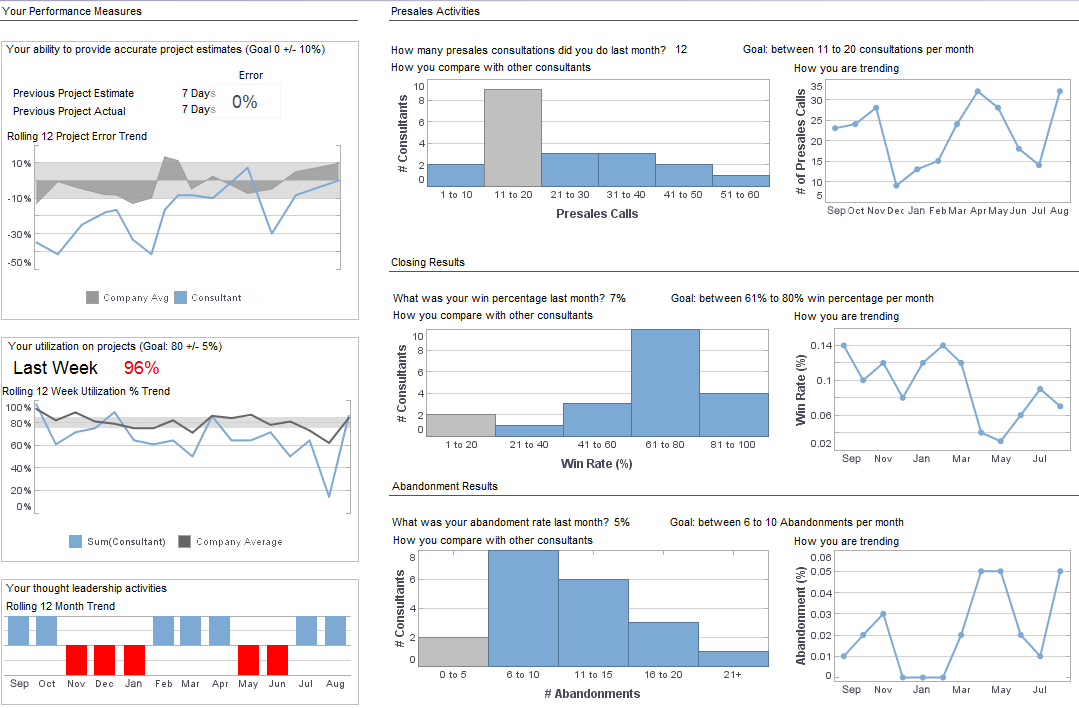InetSoft Product Information: Accessing POJO Data Sources Using InetSoft's BI System Software
The DataLoader2 interface is used to extract data which has a flat tabular structure as opposed to data with an inherent hierarchy. It is the simplest way to extract tabular data, without requiring any Data Helper class as it only deals with primitive data types. The DataLoader2 interface defines the following four methods:
1. public String[] getRequests()
- e.g. public String[] getRequests() {return new String[] {"salesForEmployee", "salesForState"}; }
2. public ObjectMetaData getRequestOutput(String request)
- e.g. public ObjectMetaData getRequestOutput(String request) {if(request.equals(“salesForEmployee“)) { return new ObjectMetaData(new String[] {"Employee", "Sales", "Year"}, new Class[] { (new String()).getClass(),(new Float(0)).getClass(),(new Integer(0)).getClass() }); }else if(request.equals(“salesForState“)){ .... }}
3. public ObjectMetaData getRequestParameter(String request)
- e.g. public ObjectMetaData getRequestParameter(String request) {if(request.equals(“salesForEmployee“)) { return new ObjectMetaData(new String[] {"fiscalYear"},new Class[] {(new Integer(0)).getClass()}); }else if(...) { ... }}
4. public Object execute(String request, VariableTable params, XSelection columns, XNodePath condition) throws ConditionNotSupportedException
The Data Helper may be required under the following circumstances:
Your Data Loader is based on the (‘DataLoader’ interface or Introspection)
AND the return object class has only primitive attributes but does not follow the Java Bean naming conventions.
OR the return object class has any hierarchy.
The data helper class must implement the ‘inetsoft.uql.object.DataHelper’ interface, which defines the following two methods:
1. public XTypeNode[] getAttributes(Class cls)
- Given a class, this method should return an array of field types. Each type can be a primitive type such as
those below, or a more complex type that represents an object tree:
- string (inetsoft.uql.schema.StringType),
- integer (inetsoft.uql.schema.IntegerType),
- date (inetsoft.uql.schema.DateType), etc.
2. public Object getValue(Object obj, String name)
- This method returns the value of a field. The name is the name of the field, and the obj parameter is the
data object. The data helper overrides the introspection in two ways. At design time, introspection is not
used to discover object fields. Instead, the getAttributes() method is called on the DataHelper to find the
fields. At runtime, field values are returned using the getValue() method of the DataHelper, instead of
calling the getter method on the data object itself. In order to define an object data source, all the
necessary files need to be put into a directory, say an ‘object’ directory. The list of necessary
files includes the
- data loader class,
- data helper class, if any, and
- all the object classes.
The parent directory of this ‘object’ directory then needs to be included in the classpath.



